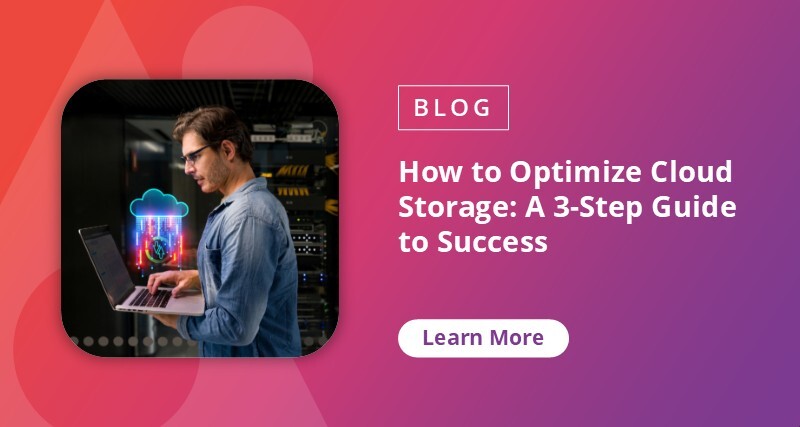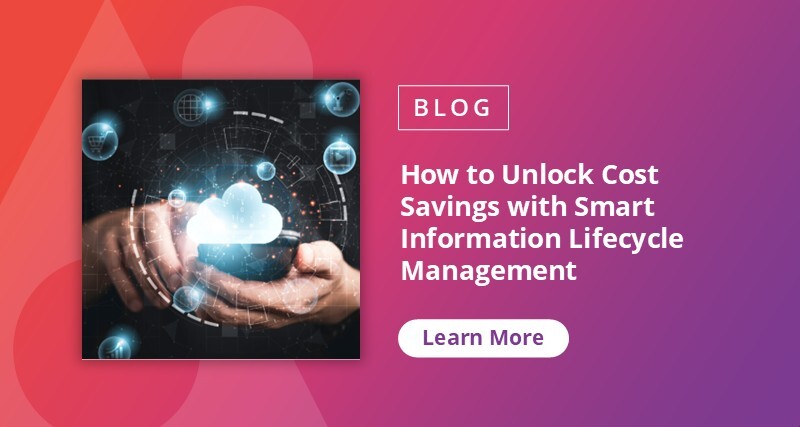When it comes to information management, the way we handle data can make or break our efficiency. As someone who has spent years in this field, I’ve seen organizations collect vast amounts of data without truly leveraging it.
To set the stage, let’s talk about my garage. During a recent cleanup, I found four fondue sets. Four! Clearly, at some point, I had stored them away, thinking they’d be useful, but when I actually needed one, I couldn’t find it. Apparently, I’m ready to move to a Swiss mountain village at any time!
The same happens with data. We store it, thinking it will come in handy, but without a system to retrieve it efficiently, it becomes useless clutter. This idea was at the heart of our recent Tech Edge episode with Jason Cassidy, CEO of Shinydocs. Our discussion revolved around a simple yet powerful question: Does searching trump storing?
The Costly Myth of “Just in Case” Storage
“You wouldn’t keep every piece of mail you’ve ever received,” Jason pointed out during our discussion, challenging the common practice of digital hoarding. But organizations have been operating under the assumption that everything that is created or captured in their systems needs to be kept forever. Not only is not the case, it also comes with risk.
Jason shared a brilliant analogy that drove this point home: Imagine 10,000 people at a rugby game, and someone left their car lights on. Would you catalog every single person’s car and license plate and then ask each person at the event individually if it was their car “just in case”? Or would you simply announce the specific car details over the PA system? The answer seems obvious, yet organizations often take the equivalent of the first approach with their information management.
This example illustrates the inefficiency of over-labeling and categorizing information versus simply retrieving what you need, when you need it. The energy spent meticulously organizing vast amounts of data often exceeds the effort required to retrieve specific information on demand. What we really need to focus on is the risk and value of the data and exert more of our time and energy into managing the information that is valuable or presents risk to the organization.
The Problem with One-Size-Fits-All Information Repository
A major misconception in information management is that a single repository can solve everything. Organizations assume they can train employees to follow one standardized system, but that simply isn’t how people work. Instead, Jason suggested flexible, user-centric information retrieval across various platforms and departments. Strategies like multi-cloud make information retrieval easier by allowing organizations to store and access data across different environments. This method reduces reliance on a single system and keeps information access more flexible.
“An engineer stores data differently than someone in finance or HR. Instead of forcing a single rigid system, why not unify search capabilities? This way, employees can find what they need, regardless of where it’s stored.”
This approach mirrors user behavior in daily life. When was the last time you sorted through physical files to find an answer? Most of us just Google it. So, why not make enterprise data work the same way?

Why Access Matters More Than Perfection
Another key takeaway from our conversation is that perfecting data storage before granting access is backward thinking. Too many IT teams insist on fully organizing, labeling, and categorizing everything before making it available to users. The problem? This approach delays the very reason the data exists in the first place: to inform decisions.
One of the most compelling examples Jason shared came from his work with oil rigs, where quick access to accurate information can literally be a matter of life and death. If a repair technician needs a crucial document before fixing equipment, they shouldn’t have to sift through outdated storage systems. Instead, intelligent information retrieval should anticipate what they need and surface it instantly. This principle applies everywhere – from banking to local government – where employees require immediate access to reliable information to make critical decisions.
The Artificial Intelligence (AI) Evolution: From Storage to Intelligence
The future of information management is shifting from where data is stored to how it can be efficiently retrieved and utilized. The key takeaway is that access to real-time information enhances agility and responsiveness in business operations.
This shift represents a fundamental change in how we think about information management. It’s not about creating perfect storage systems; it’s about creating the perfect search systems. Just as I don’t need to know which cabinet holds my coconut cream cans (yes, I have a hoarding problem with those too, but come on, it’s just so versatile!), users shouldn’t need to know which system holds their required information.
By leveraging AI and focusing on user-centric design, organizations can transform their approach to data management. This strategy can turn information into a powerful asset for decision-making and operational efficiency.
Simplifying Complexity for End Users
One concept I always emphasize is my “Alyssa Blackburn Scale of Complexity” (patent pending — unofficially, of course), which at its core says the closer you get to the end user, the less complex things should be. Systems should be complex where necessary but simple where our users have to interact with them. Employees shouldn’t need extensive training to retrieve a file. Instead, they should be able to search for it as easily as they would look up a restaurant online.
When companies make information retrieval intuitive, they empower employees to do their jobs more efficiently. Conversely, when systems are too cumbersome, employees find workarounds that can lead to shadow IT and security risks.

Three Actionable Recommendations
From our conversation with Jason, three solid recommendations emerged for organizations looking to optimize their information management:
1. Implement a “Find First” Architecture
Stop focusing on where to store information and start focusing on how to find it. Deploy a unified search system that works across all your information repositories — similar to a Google-like search experience. This means investing in tools that can index and search across multiple systems simultaneously, regardless of where the information is stored. Set up regular system-wide indexing schedules and ensure your search tools support natural language queries.
2. Adopt Progressive Implementation
Instead of waiting for perfect data organization before allowing access, get information into users’ hands quickly and iterate based on their feedback. Start with a pilot group in a high-impact area (like technical service teams), implement basic search capabilities, and expand based on real usage patterns. Monitor search patterns and failed searches to improve system effectiveness continuously. Don’t let perfect be the enemy of good! Doing something and then learning is better than waiting until you’re convinced it will be perfect.
3. Automate Information Classification
Leverage AI to automatically classify, label, and organize information as it’s created or received. This means implementing AI tools that identify duplicate content, classify sensitive information, and extract key metadata without human intervention. Set up automated workflows to handle routine classification tasks and establish clear governance policies for AI-assisted classification to ensure consistency and compliance.
Final Thoughts
As Jason reminded us, many organizations have been “six months away” from their perfect electronic document management program for the last decade. The reality is that perfection in storage isn’t the goal — it’s to bring the right information to the right people at the right time. Organizations that shift their focus from hoarding data to making it easily retrievable will be the ones that thrive.
Check out this episode and more here: The Tech Edge — Ticker.

